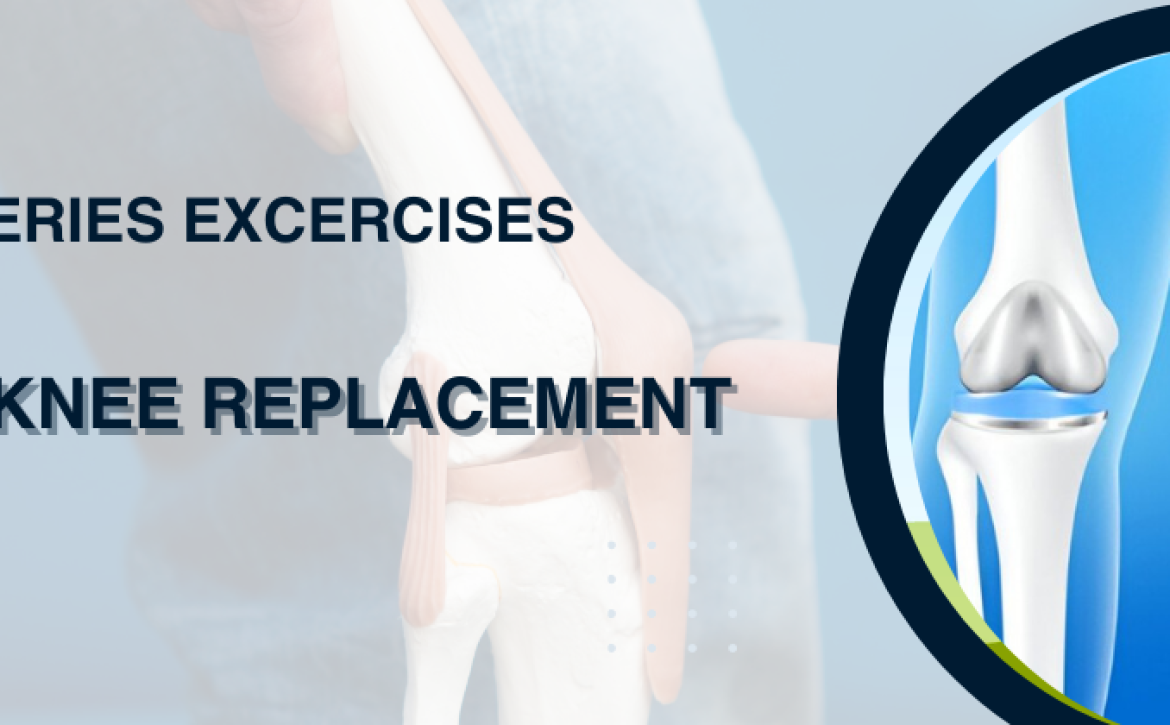Why Pre-Surgery Exercises Matter: Strengthening Your Knee Before Partial Knee Replacement
Introduction
Are you getting ready for partial knee replacement surgery and considering how to recover smoothly with minimal pain? One of the most underutilized yet effective methods of enhancing your surgical result is through pre-operative knee strengthening exercises prior to partial knee replacement. Strengthening the muscles that surround your knee joint can make a big difference in joint stability, mobility, pain reduction post-surgery, and recovery acceleration after your surgery.
Numerous patients with knee osteoarthritis, cartilage loss, or long-standing knee pain resort to unicompartmental knee replacement to revive movement and eliminate pain. Yet, what they don’t know is that undertaking a pre-operative knee exercise regimen can greatly enhance post-surgical mobility, flexibility, and knee function. Having a healthy knee prior to surgery translates to fewer stiffness, better balance, and enhanced range of motion once your rehabilitation process commences.
Benefits of Strengthening Your Knee Before Partial Knee Replacement
Preparing for partial knee replacement surgery is not just about scheduling the procedure—it’s about ensuring the best possible recovery. Engaging in pre-surgery knee strengthening exercises can have a significant impact on your post-surgery rehabilitation, mobility, and pain management. Strengthening the muscles surrounding the knee joint improves joint stability, enhances flexibility, and reduces the risk of complications after surgery. Below, we explore the key benefits of strengthening your knee before partial knee replacement and how it contributes to a faster and smoother recovery.
- Faster Recovery After Knee Replacement Surgery – Strengthening your knee before surgery helps with faster rehabilitation and better mobility post-surgery. Strong muscles support the partial knee implant, reducing stiffness and improving movement. Knee surgery recovery exercises like leg raises and quad sets enhance flexibility and speed up healing.
- Reduced Pain and Swelling Post-Surgery
Pre-operative exercises enhance blood flow, assisting with pain control and swelling reduction for the knee. The stronger muscles impose less pressure on the knee joint, thus reducing inflammation and allowing for an easier recovery post-surgery. - Improved Joint Stability and Mobility
A healthy knee enhances joint flexibility and stability. Preoperative exercise for mobility retains balance, prevents falls, and provides improved range of motion after surgery. The strengthening of essential muscles such as the quadriceps and hamstrings supports proper alignment of the knee. - Lower Risk of Post-Surgery Complications
A prehab routine reduces knee replacement surgery risks, such as blood clots and muscle weakness. Performing prehab exercises for knee replacement before surgery helps maintain muscle strength, making recovery smoother and preventing post-surgical complications.
Best Pre-Surgery Exercises for Strengthening Your Knee
Performing knee strengthening workouts before partial knee replacement surgery helps improve joint stability, flexibility, and post-surgery recovery. Below are the best exercises before knee replacement to prepare your knee for surgery.
1. Quadriceps Strengthening Exercises
- Straight Leg Raises – This pre-operative knee exercise strengthens the quadriceps muscles without putting pressure on the knee joint, improving leg stability before surgery.
- Quadriceps Sets (Isometric Holds) – A simple but effective knee strengthening workout that helps maintain quad muscle strength and prevents post-surgery muscle loss.
2. Hamstring & Calf Strengthening Exercises
- Seated Hamstring Curls – Strengthens the hamstring muscles to support knee movement, reducing strain on the knee joint during recovery.
- Heel Raises – Helps build calf strength and improves knee stability, essential for post-surgery mobility.
3. Low-Impact Cardio Exercises for Knee Strength
- Stationary Cycling – A safe, low-impact cardio workout that enhances knee flexibility, improves blood circulation, and strengthens leg muscles without stressing the joint.
- Water-Based Exercises (Swimming, Water Aerobics) – Water therapy exercises reduce knee pressure while increasing range of motion and overall knee strength before surgery.
4. Range of Motion & Flexibility Exercises
- Heel Slides – Improves knee joint mobility, enhances range of motion, and prevents stiffness before and after surgery.
- Seated Knee Extension Stretch – Aids in knee flexibility, reduces tightness, and helps maintain smooth joint movement post-surgery.
How to Safely Perform Knee Strengthening Exercises Before Surgery
Preparing for partial knee replacement with knee-friendly workouts is essential, but doing them correctly is just as important. Here’s how to safely perform knee strengthening exercises before surgery while avoiding strain or injury.
- Consult Your Orthopedic Surgeon or Physical Therapist First – Before beginning any knee strengthening routine, it’s crucial to get guidance from your orthopedic surgeon or physical therapist. They can recommend the best exercises before knee replacement tailored to your condition, ensuring you’re not putting unnecessary stress on the joint.
- Avoid High-Impact Activities That Can Worsen Knee Pain – High-impact exercises like running or jumping can put excessive strain on your knee joint, leading to more pain and inflammation before surgery. Instead, focus on low-impact exercises like stationary cycling, swimming, or controlled strength training to build muscle without worsening knee discomfort.
- Importance of Proper Form and Gradual Progression – Using the right form while performing knee strengthening exercises is key to preventing injuries.
- Start slowly with gentle movements, keeping your posture and alignment correct to avoid unnecessary strain. Gradually increase repetitions and resistance based on your comfort level, ensuring a safe and effective pre-surgery knee workout.
Conclusion -
Preparing for partial knee replacement with pre-surgery knee exercises plays a vital role in ensuring a faster recovery, improved mobility, and reduced post-surgery complications. Strengthening the muscles around your knee enhances joint stability, minimizes pain, and helps you regain movement more efficiently after surgery.
By committing to a structured prehab routine, you can set yourself up for a smoother rehabilitation process and a better overall outcome. Every small effort before surgery contributes to a quicker return to daily activities with less discomfort.
For a personalized knee strengthening plan tailored to your needs, consult your orthopedic specialist or physical therapist. Their guidance will help you safely perform knee-friendly exercises while protecting your joint health before surgery. Taking proactive steps today will lead to a stronger, healthier knee tomorrow!





